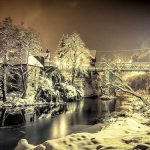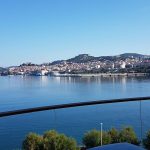In season there are eight to fifteen thousand visitors daily
A true sign of alarm in the Plitvice Lakes national park is the huge number of visitors. Mass tourism is wearing down the lakes in ecological and urban ways. So much that UNESCO is concerned and may remove the site from the list of protected world heritage, Poslovni Dnevnik wrote on July 12, 2016.
The warning comes for a simple reason – it is not being protected. “Plitvice are faced with two key problems: excessive visits and excessive construction, as UNESCO warned on its official web page,” said Anđelko Novosel, director of Plitvice national park.
In season there are between eight and fifteen thousand visitors daily. Judging by the guests, their most important equipment for visiting nature is the selfie stick.
“They are no longer satisfied with staying on trails but are considerably roaming beyond them to get away from the crowds and get nice photos, which damages the tuff which is the main reason why we are under UNESCO protection,” said Katarina Poljak of Plitvice national park.
Attempting to get better selfies, five tourists have fallen into precipices in the last few years, while last year a woman from Slovakia died.
Moving off paths, feeding fish, dipping their feet in the lakes are just some of the things visitors like to do. Certainly not good for the fresh lake water and protected lake tuff, while the 9 guards can barely oversee the visitors. Every ticket holds a list of warnings. Despite this many find themselves in situations of paying fines.
In order to control these situations and preserve nature, it is necessary to limit the number of visitors, but also increase income, said the park director. It is the only sustainable way to preserve Plitvice.
“This is the goal of the future action plan of managing visitors set by UNESCO in 1998. It still hasn’t been finished. There is no will, in my opinion, to complete it, as that plan means a definite turn in managing visitors to the park,” Novosel added.
The Plitvice national park stretches over 300 square kilometres, all of it under UNESCO protection as world heritage, but many locals see it as a way to make money.
Apartments are flourishing, which wouldn’t be bad if there was a sustainable plan. But the area plan was published against many objections the Park management sent to local authorities, as investor interest is high, so who cares about protecting nature.









